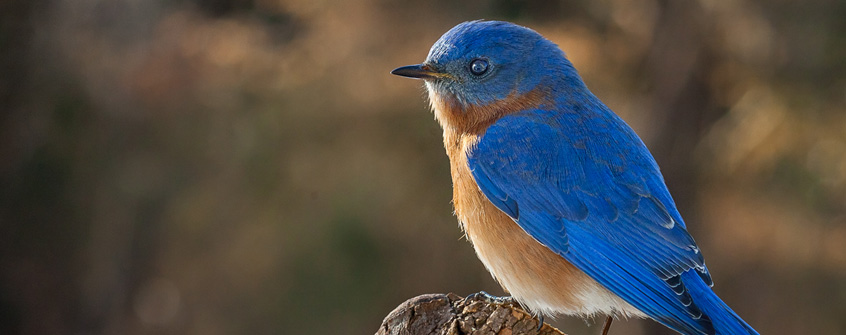

Bluebirds and their Enemies
Life for any wild animal can be challenging, and bluebirds are no exception. They face a range of enemies, each with different risks and management options. An excellent guide to these challenges can be found at Sialis.org; below is an overview of the most common problems experienced.
Cats
With the exception of habitat loss, cats likely pose the greatest threat to birds in the United States. Estimates put the number of birds killed each year at well over 1Billion birds. Cats are efficient hunters and killing is instinctive; the suggestion that a well-fed cat won’t hunt is simply false. The best solution to this problem is to keep cats indoors and find solutions to reduce the number of feral cats.
Bluebirds, of course, are one of those species impacted by cats. Cats pose a threat at all life stages, but perhaps are most destructive during the nesting cycles when they can attack and kill adults in the box and wipe out entire broods of young. Careful placement of nest boxes and correct use of predator guards (see example) can greatly reduce this risk.
More information about cats and birds can be found at the following links:
- US Fish and Wildlife – Threats to Birds
- American Bird Conservancy – Cats and Birds
- Sialis.org – Cats and cavity nesting birds
House Sparrows
The House Sparrow is a non-native invasive species that was introduced to the United States more than 100 years ago, and has since expanded across the continent to become one of the most common species in the US, though populations are declining. Like bluebirds, house sparrows nest in cavities (such as nest boxes) and will compete aggressively with our native cavity nesting species for available space. In many cases, house sparrows are the single biggest challenge to bluebird nest success.
House sparrows have earned a reputation for aggressively attacking nesting bluebirds (and other species), killing adults and young. They will even build their nest on top of the birds they kill. Their aggressiveness and persistence make them a serious challenge. Management includes passive (non-lethal) methods of discouraging or preventing them from nesting to active (lethal) methods of reducing local numbers.
Below are a selection of links to house sparrow information, ranging from basic biology to management techniques.
Safely and effectively deter House Sparrows
OBS board member Carl Gleditsch has designed a monofilament deterrent (fishing line) that is effective if installed before House Sparrows show interest in a nest box. The monofilament (fishing line) is a permanent addition to the next box.
Download the PlansNest parasites
Although ants and mites are often found in bluebird nests, impacts to young are typically minor and can be resolved by replacing the nest. A potentially bigger problem is blow fly larvae, which are the larval stage of a fly that targets bird nests to lay their eggs. Larvae feed on the blood of nestling birds, and a large infestation can seriously impact nestling health. Routine checks below the nest and nest changes can greatly reduce the risks and impacts of blow fly larvae.
More information on blow fly management can be found at the following links:
House Wrens
The House Wren is a native species and is protected by the Migratory Bird Treaty Act. A voracious insectivore, the wren is constantly hunting and can be a lot of fun to watch. However, despite their size, wrens will compete with larger birds and can be a serious threat to bluebirds and other species using nest boxes. Careful nest box placement is the best management practice for limiting wren problems. Keep bluebird nest boxes far from treelines or shrubby areas, which are preferred by wrens.
The following links provide more information on House Wren biology and management.
Other Predators
Cats are not the only predators that attack bluebirds. Snakes, raccoons, squirrels, and larger birds all pose a threat. Properly designed and installed predator guards are the best solution. A wide variety of predator guards have been developed over the years, some better than others. The following links will provide more information on predator protection.
